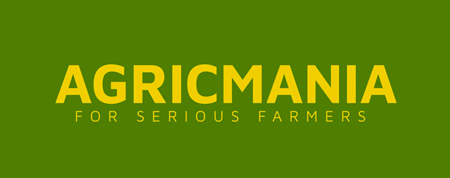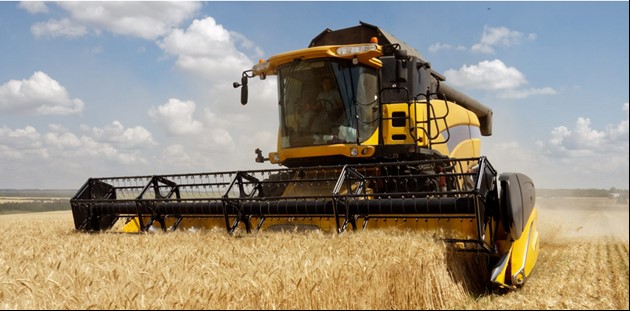By Victor Bhoroma
The Zimbabwean government recently reviewed upwards producer prices for maize, traditional grains, soya beans and sunflower in line with inflation and the need to improve supply in the market. The new floor prices for maize and traditional grains are ZW$75,000 per Metric Tonne (MT), for Soya Beans ZW$171,495/MT and for Sunflower ZW$205,795/MT. When paired against the pegged central bank exchange rate, the producer prices are way overvalued. However, the better picture in terms of planning comes when the prices are paired against the ruling current exchange rates on the market.
However, the disparity in terms of prices is an arbitrage pricing, hoarding and rent seeking loophole which will be immediately exploited.
Impact of Ukraine War
Prior to the war in Ukraine, international food prices had already reached an all-time high and the war has exacerbated global food shortages. The shortages are affecting Southern Africa in the form of high food prices, imported inflation, and commodity shortages.
Ukraine and Russia account for 29% of global wheat experts and 62% of sunflower oil supplies. They are both key producers of barley and maize as well. Globally, 50 countries depend on Russia and Ukraine for at least 30% of their wheat import needs. In that context, this war has multiple implications for global markets and food security, representing a challenge for food security for many countries, and especially low-income food import dependent countries. Nevertheless, it can represent an opportunity for the African continent which is struggling to fully utilize abundant arable land. The vast continent has 60% of the world’s uncultivated arable land yet Africa is heavily reliant on food imports from high income
countries. Over the past decade, the continent has seen growing demand for cereal crops, including wheat, soya, and sunflower, which has been mainly supported by imports instead of local production. Africa’s wheat imports increased by 68% between 2007 to 2020, surging to over 49 million tonnes. Such is the potential to produce and take advantage of the global food supply gap for countries such as Zimbabwe with vast tracts of arable land.
Zimbabwe Agriculture Status
Zimbabwe has 39.6 million hectares of land, with about 42 percent being suitable for agriculture purposes. However, only 35% of that arable land is being fully utilized for crop production. Crop production in the country is largely rain fed with only 40% of the total arable land receiving rainfall considered adequate for crop cultivation. Zimbabwe has one of the highest levels of food insecurity in Sub Saharan Africa (SSA) regardless of seasonal variations in rainfall patterns. Small holder farmers are highly vulnerable to climate change due to overdependence on rainfall, thus extreme weather conditions further intensify low productivity and poverty. As a result of the above, Harare has been a net importer of food for the past 2 decades and the country’s import bill has increasingly featured grain imports with maize imports averaging 1.1 million Metric Tonnes (MT) per year from 2010 to 2020 while wheat and soybeans account for 300 000MT and 150 000MT in import quantities respectively. Imports for these three raw grain commodities cost the country at least US$600 million in 2020 alone. This is before processed cereal and other agricultural commodities are factored into the import equation. However, above normal rainfall in 2021 improved maize yield to 2.7 million MT from 980,000MT in 2020. There was also marked improvement in production for wheat and traditional grains in 2021.
Decline in agricultural productivity
Zimbabwe’s fast tracked Land Reform Program left a huge dent on the country’s food security status, land tenure, investment levels and value-addition of agriculture exports. However, it’s now 22 years after the land reform program, yet production looks very fragile along rainfall pattern lines. Yield per hectare for maize (the staple crop in Zimbabwe) remains very low with average national yield less than 0.7 tons per hectare (Lower than the African average of 1.8 tons/ha).
The yield is also lower than SADC peers who are largely affected by the same climatic conditions, with Namibia, Malawi and Mozambique at 1.2 tons/ha, Tanzania at 1.3 tons/ha, Zambia at 2.5 tons/ha and South Africa at 5.3 tons/ha. Consequently, Zimbabwe was South Africa’s largest maize market in 2019 and 2020, accounting for 30% of the official exports. Interestingly since the year 2000, Zambia has tripled its maize production with an average of 2.9 million MT per year in the past 10 years alone and constantly exporting maize to its southern neighbor. The following are some of the key challenges bedeviling Zimbabwe’s agriculture potential and inhibiting any chance to take advantage of the global food supply gaps in the short to medium term.
Lack of title and capital
Commercial agriculture is capital intensive and private capital plays a key role in filling that financing gap. However, most resettled farmers in Zimbabwe have no bankable title deeds to their land which makes it worthless as an asset and difficult to access credit from financial institutions. The issued (to selected farmers) 99-year leases are not transferable, hence not appealing to the banking sector in an environment where confidence and policy consistency are in short supply. The law still gives the government the right to revoke the lease using its own discretion, which makes land a key political tool in the country. Without sufficient funding, local farmers cannot significantly increase yield to take advantage of the shortages or rally in world prices.
Limited irrigation models
Local rainfall patterns have adversely changed in the last few years due to climate change and over 60% of the country receives rainfall that is not adequate for crop cultivation. This means that funding for irrigation equipment is critical. Zimbabwe has over 10,747 small to large dams and rivers covering an approximate area of 117, 662 hectares of land. Thus, there is huge potential to irrigate more than 2 million hectares of land. However, less than 173,000 hectares are currently under irrigation. The utilization of existing water bodies remains very low. Successful irrigation schemes do not only guarantee food security but they enable farmers the liberty to try other cash crops while venturing in all year round farming.
Low levels of mechanization
Most of the agriculture in Zimbabwe is driven by manual labour, Ox drawn power and other subsistence methods that yield well on organic quality but very low on volume. Zimbabwe needs over 30,00 tractors, thousands of combine harvesters and other farm implements that are key to reducing the cost of production and improving yield. This is the modern reality of farming where countries such as the United States, Brazil, China, Australia, Russia, and Ukraine have mastered to increase yield per hectare. Regrettably, the deficit in mechanization cannot be addressed overnight or in the short to medium term. Similarly, it cannot be done through government funding alone.
Government policy
In the last 20 years, Zimbabwe’s monetary, fiscal, and agricultural policies have not been friendly to primary producers of agriculture commodities. This is the major reason why several small holder farmers have given up large tracts of land for other income generating activities such small scale mining. Constraints faced by farmers range from high levels of inflation (increase in prices of inputs and services), inefficient foreign exchange markets, delays in payments, subeconomic producer prices, export bans, limited training, and lack of access to markets for remote farmers. To address these issues, pricing must be left to farmers’ associations while the commodity exchange market should address market access and payments issues. The government should only partake in buying grains up to the level of stocking strategic reserves or for emergency interventions in distributing food to households. As such government policy must be geared towards creating markets where farmers meet suppliers independently and allowing prices to match regional prices to incentivize primary production. Without this, Zimbabwe cannot (sustainably) be counted as an agricultural commodities exporter in Africa.
Agriculture in Zimbabwe is now dominated by the state which plays the role of price setting, regulation, providing subsidies and loans (financing), purchasing, and paying, and setting policies that often change course anytime. The government predominantly prefers giving inputs subsidies to small holder farmers, pegging producer prices and centralizing land tenure for political reasons. Most local farmers have folded their hands on self-financing in order to get cheap inputs from the government. Viability and government policy is draining a few successful commercial farmers who could take advantage of the heightened global demand. Additionally, most small holder farmers have limited scope of farming as a business which makes it difficult to be agile and take advantage of global food supply gaps. Overall, Zimbabwe must first attain food security and fix legacy issues impacting agriculture production before aiming for the export market that has gone lucrative because of the Ukraine-Russia war and other global supply bottlenecks.



